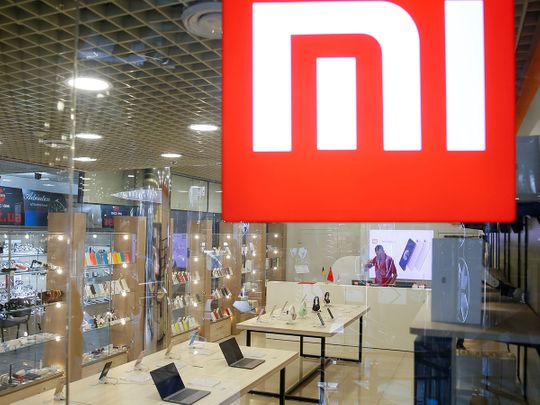
New York: Xiaomi Corp introduced its first phone compatible with the latest, fifth-generation cellular technology in China, as the country’s once-biggest smartphone maker prepares for an uphill battle against local rival Huawei Technologies Co.
Billionaire co-founder Lei Jun introduced the 5G-capable Mi 9 Pro in Beijing on Tuesday, the latest of Xiaomi’s classic product line that began nine years ago. Built around the Qualcomm Snapdragon 855+ processor and a gluttonous serving of memory and storage, the Mi 9 Pro has seven antennas to ensure the fastest possible cellular speeds, with Lei showing off real-world speeds in China of over 2 gigabits per second. It will start at 3,699 yuan ($520, Dh1,910), while a 4,299 yuan model will max out the storage.
The long-awaited phone upgrade cycle that 5G networking is set to trigger will be hotly contested ground among China’s leading smartphone vendors. Xiaomi is launching its first two fifth-generation devices in the country just in time for the holiday shopping season, seizing on the seasonal bump in demand with the cachet of having the latest and greatest connectivity.
“We are still ranked No 4 globally, according to IDC, but if you look closer, we can squeeze into the top three with some hard work,” Lei said on stage in front of a slide that showed Samsung Electronics Co, Huawei and Apple Inc ahead of his company. “The road to global No 3 is not far away now.”
Later at the Beijing event, Xiaomi is slated to introduce another 5G device, code-named Mix Alpha, the latest addition to its bezel-less phone product line.
In recent times, Xiaomi has fallen out of the leading echelon in the Chinese market, where Huawei, Vivo and Oppo accounted for over 70 per cent of all shipments in the June quarter, according to research firm IDC. The Beijing-based company is now trying to hold its No 4 position in China against Apple, which just started to sell its marquee iPhone 11 series the past weekend.
The new 5G phone release helps Xiaomi join competitors Huawei and Oppo in a race to attract the first cohort of 5G users in China. Lei’s company previously committed $725 million to beef up its Chinese retail network, faced with an aggressive Huawei that is now inching closer to commanding half the Chinese smartphone market even at a time of onerous US sanctions.
In his Beijing presentation, Lei talked up the technical details of the Mi 9 Pro, especially download speeds and features like wireless charging. He was speaking from Xiaomi’s newly built office building wrapped in a futuristic shell of massive glass panes and a glinting metal facade in the northern outskirts of Beijing.
Xiaomi is now attempting to lift profitability through the development of various internet businesses, including online advertising, mobile gaming and video sharing. With time, 5G technology is likely to unlock potential new revenue paths in Xiaomi’s services businesses, which may include live, high-definition streaming of sports events.












